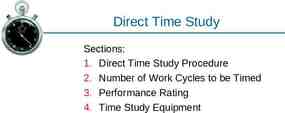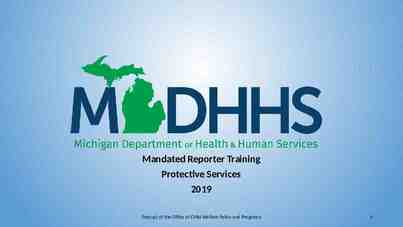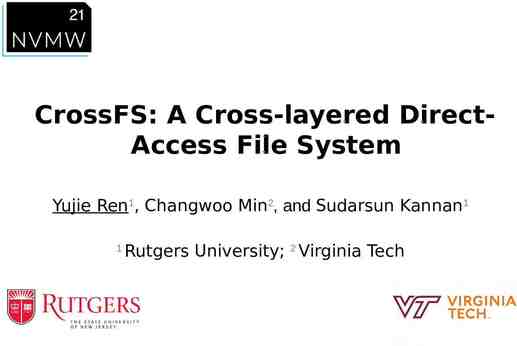NBAA AIRCRAFT GROUND DAMAGE PREVENTION Best practices for
40 Slides792.50 KB

NBAA AIRCRAFT GROUND DAMAGE PREVENTION Best practices for preventing business aircraft ground damage events June 2002

Introduction Purpose of program - reduce aircraft ground damage risk by providing “best practices” interventions Focused audience - corporate flight and maintenance crews Intended use - training and awareness tool Self-audit tool - gap analysis, how do we manage these risks? (tbd) Incident analysis flow chart -tool to look at human factors issues What this is not - a tool to manage FBO’s Size of the problem ? Many costs uninsured, estimated at over 100 million/year in direct costs NBAA Safety Committee

Most significant risk factors for ground damages Frequency of events % 1. 2. 3. 4. Towing Ramp movements Ground service equipment Hangar movements towing Ramp GSE Hangar 0 NBAA Safety Committee 10 20 30 40 50

Most significant human factors issues for ground damages 1. 2. 3. 4. 5. Time pressures - task saturation Skill based errors - over/under skilled Customer satisfaction Direct rule based violations Environmental i.e. illumination, visual obstructions, noise levels 6. Communications breakdowns 7. Loss of situational awareness NBAA Safety Committee

Maintenance Related Exposures NBAA Safety Committee

Risk Exposure - Area: Maintenance Related Exposures Situation/Exposure Mobile ladders/equip near aircraft control surfaces Walk paths near aircraft storage positions Use of non-rubber chocks while in hangars Static wick protection warning devices Complete a Job hazard analysis for specific aircraft maintenance exposures related to unique situations NBAA Safety Committee

Risk Exposure - Area: Maintenance Related Exposures Situation/Exposure Fire Protection - urea foam deluge systems should receive periodic inspection Equipment that can move due to vibration or jet blast should be chocked or secured Aircraft log books should be stored in a secure storage system when not in use Clothing - Belt buckles covered and shoe protectors used if required. NBAA Safety Committee

Aircraft Movement NBAA Safety Committee

Risk Exposure - Area: Aircraft Movement In/Out of Hangars/Storage Situation/Exposure Use of at least 2 wingwalkers while moving aircraft from or into hangars along with tug operator Team completes an area risk assessment before moving aircraft Perimeter floor marking that delineates limits of aircraft placement near hangar walls NBAA Safety Committee

Risk Exposure - Area: Aircraft Movement In/Out of Hangars/Storage Situation/Exposure Hangar doors - securing methods to prevent inadvertent closure due to jet blast or high winds Aircraft wings should not overlap other aircraft due to settling hazard Hangar doors should be fully opened before aircraft movement Aircraft should not be moved through propeller arcs NBAA Safety Committee

Risk Exposure - Area: Aircraft Movement In/Out of Hangars/Storage Situation/Exposure Floor/ramp markings delineate best aircraft positions for entry or exit from hangars Suggested hangar staking diagrams should be provided as visual aids Overhead doors systems should have a periodic inspection process NBAA Safety Committee

Risk Exposure - Area: Aircraft Movement In/Out of Hangars/Storage Situation/Exposure A Job hazard analysis should be completed for aircraft movement exposures in hangar areas related to unique situations Written procedures for aircraft movement should be available in both the flight and maintenance operations manuals Employees who move aircraft receive should receive training on company procedures NBAA Safety Committee

Risk Exposure - Area: Aircraft Movement In/Out of Hangars/Storage Situation/Exposure A visual inspection of the aircraft should be completed before any tow initiates The team should complete an area risk assessment briefing before moving aircraft - all sides of aircraft perimeter visually inspected for hazards Towing equipment tugs/lektro tugs visually inspected, brakes checked, correct tow bar verified NBAA Safety Committee

Risk Exposure - Area: Aircraft Movement In/Out of Hangars/Storage Situation/Exposure Towbars should be labeled as to aircraft type Tugs are marked as to rated maximum loads A post tow inspection should completed of aircraft For aircraft pushes, the rear area must be inspected before movement A written job hazard analysis should be completed for aircraft towing exposures 15,000lb NBAA Safety Committee

Aircraft Towing NBAA Safety Committee

Risk Exposure - Area: Aircraft Towing - Ramp Areas Situation/Exposure Verification that aircraft brakes are off is completed before the tow or push is initiated Employees who move aircraft should receive training on procedures Aircraft are towed at a safe walking speed Towing safety rules marked on tugs NBAA Safety Committee

Risk Exposure - Area: Aircraft Towing - Ramp Areas Situation/Exposure Large/heavy aircraft should require a person acting as a brake monitor during movement - in cockpit If the tow operator loses sight of wing walker, an immediate STOP should occur If there is any doubt as to having adequate space/clearance,an immediate STOP should occur NBAA Safety Committee

Risk Exposure - Area: Aircraft Towing - Ramp Areas Situation/Exposure Aircraft should only be moved by approved vehicles NBAA Safety Committee

Aircraft Taxi Flight Crew Procedures NBAA Safety Committee

Risk Exposure - Area: Initial Aircraft Taxi Approach to Ramp Area Situation/Exposure Pilots should visually scan the ramp for risks while taxing in Ground marshaller’s should provide the correct hand signals if in doubt, stop While taxiing, the area should continually be scanned for threats such as: drain grates, narrow rows of positioned aircraft, ramp slope, blind spots,jet blast hazards, wind direction, loose chocks, vehicle movements NBAA Safety Committee

Risk Exposure - Area: Initial Aircraft Taxi Approach to Ramp Area Situation/Exposure Pilots should communicate (radio) with unicom or for taxi in assistance from FBO, etc. Pilots should observe any hazards related to ground service equipment movements or positioning hazards - plan ahead for departure routes NBAA Safety Committee

Flight Crew Precautions (departure) Flight crew should complete a visual inspection of the aircraft prior to departure Pilots should ensure that wing walkers are used in confined areas or areas where marshalling person cannot see all positions of the aircraft. Pilots should visually survey the ramp area for risks during pre-start and taxi NBAA Safety Committee

Aircraft Parking Flight Crew Precautions NBAA Safety Committee

Risk Exposure - Area: Aircraft Parking/Tie Down - Ramp Areas Situation/Exposure Warning cones should be placed at wing tips and tail Potential jet exhaust blast hazards should be planned for Aircraft should be positioned to avoid wing overlap hazards Triple chocks should be placed at mains and nose gear for overnight parking NBAA Safety Committee

Risk Exposure - Area: Aircraft Parking/Tie Down - Ramp Areas Situation/Exposure The main gear should be chocked at all ramp parking situations A ground marshler should be used to aid for taxi in and departure from parking spots Ground air stair mats should be removed before engine start NBAA Safety Committee

Ground Service Equipment NBAA Safety Committee

Risk Exposure - Area: Ground Service Equipment Fuel Trucks should be chocked when servicing aircraft All mobile equipment should be positioned to not face aircraft Ground power units should not be positioned under tail sections and must be chocked Special precautions should be followed to insure the removal of GPU plugs before the unit is moved Tugs and other types of GSE such as golf carts should be shut-off, parking brakes set, and chocked when left unattended NBAA Safety Committee

Flight crew communications with ground crews Hey, do you have crew cars? Fuel her up and I will see you in the AM Pilot Ground crew NBAA Safety Committee

Crew Communications Flight and Ground - Towing Flight Crew Questions Grnd Crew Response “Will you be No towing our aircraft today?” “Are you familiar with this type of aircraft?” Actions Present the company’s written suggested procedures that outlines ground chocking procedures and protection - cones, etc. Yes Inform ground crew - “be advised, the brakes are off and here is a copy of our companies preferred methods for towing and secureing our aircraft”. Yes If time permits, assist as a spotter No or shows uncertainty Ask that the aircraft remain where it is or that an employee who is familiar with towing the type of aircraft be locaSafety ted bCommittee efore it is towed NBAA

Crew Communications Flight and Ground - Towing Flight Crew Questions Grnd Crew Response Actions “Have you been No trained to tow this type of aircraft?” Ask that the aircraft remain where it is or that an employee who is familiar with towing the type of aircraft be located before it is towed “Will the aircraft be towed during times the flight crew is not available?” Request that a wing walker be present and that the perimeter of the aircraft be cleared before movement. The use of a brake monitor maybe required on heavy aircraft. Yes NBAA Safety Committee

Crew Communications Flight and Ground - Hangar operations Flight Crew Questions “Do you have room for our aircraft in a hangar?” Grnd Crew Response Yes Actions Present the company’s written suggested procedures for hangar movements, i.e., required wing w alkers, chocks, movement speed, etc. NBAA Safety Committee

Crew Communications Between Flight and Ground Crews - Fueling Flight Crew Questions Grnd Crew Response “Are you familiar No with the fueling procedures for this aircraft?” Yes Actions Present the company’s written suggested procedures that outlines fueling methods. If time permits assign a pilot to observe fueling. As much as practical, fueling should be conducted only when a flight crewmember or employee of the aircraft’s owner is present. NBAA Safety Committee

Case studies of what can go wrong Aircraft Towing (Hangar) Event: Two ground crew employees were positioning a Falcon 50 into a hangar when the left wing tip struck a golf cart. One employee was operating the Lektro tug and the other employee was acting as the wing walker. The aircraft was being nosed into the hangar. There was a golf cart being charged on the left side of the hangar and a car was parked on the right side of the hangar. As the aircraft was being pulled in, the wing walker was at the rear of the aircraft going between the right wing and left wing to monitor clearance. As the right wing cleared the car the wing walker started to move back to the left wing when the left wing tip struck the golf car Lear–60 Ground Power Unit Event: A Lear-60 requested a GPU start assist. Upon completion of both engine starts, and proper shut down procedures of the GPU, the line service technician noticed the GPU cable plug head felt very hot to the touch during disconnect from the aircraft GPU receptacle. The crew was notified, shut down the engines, and requested a maintenance inspection of the GPU receptacle and related components. The aircraft maintenance representative discovered a lose wire on the internal bracket of the GPU receptacle located within the fuselage. . NBAA Safety Committee

Case studies of what can go wrong Aircraft Towing and Hangar Storage Event: Two line service employees with the additional assistance of two aircraft crewmembers were preparing to pull an aircraft from a hangar. The tractor operator misjudged the gear pattern noted on the transmission stick selector, and upon release of the clutch pedal the tractor lurched forward several inches pushing the aircraft into another aircraft positioned directly behind. The intended tow aircraft suffered a dent to the right outboard flap, and the other aircraft suffered a scratch to the nose cone. Use of Approved Tow Bars Event: The owner of a Mitsubishi MU-2 recently requested his aircraft to be towed from a hangar utilizing the customer owned tow bar. Upon the initial tow bar inspection, it was noticed the tow bar was not equipped with manufacturer identification tags and the tow bar was bent. The line crew notified their supervisor of their findings, and the supervisor instructed the crew not to use the tow bar. The supervisor notified the pilot of the issue and requested the manufacturer labeled tow bar, designed for the aircraft be used. The pilot understood the concern and had no issue with utilizing the approved tow bar. The approved tow bar was used with no further incident. NBAA Safety Committee

Case studies of what can go wrong Crew miscommunication Event: The ground crew was informed by the flight crew that the aircraft ( King Air 200 ) brakes were set in the off position. A tow was initiated which resulted in damage to the brake and wheel assembly. Aircraft Towing - lektro tug Event An employee used the Lektro 8750 to tow a Cessna 425 Corsair to a hangar. After the employee captured the C-425 he installed the front gate guard on the bucket of the Lektro. The aircraft was towed to and placed in the common hangar. The operator of the Lektro unit lowered the bucket and released the winch strap prior to chocking the aircraft. The C-425 rolled backwards into the front gate guard crushing the nose wheel fender. The nose wheel fender, which covers the rear of the nose wheel, was crushed against the tire and the fender brackets were broken. NBAA Safety Committee

Case studies of what can go wrong The result of unauthorized vehicle operation on ramp areas NBAA Safety Committee

Case studies of what can go wrong The result of no chocks on a sloping ramp NBAA Safety Committee

Self-audit tool:Gap Analysis We have written standard operating procedures Y N Employees trained on procedures Y N Employees provided risk awareness training Y N Incident investigations conducted Y N We have completed a risk assessment Y N Compliance evaluations completed Y N We have the correct ground equipment Y N We monitor FBO actions Y N We have an accountability system in place Y N Access to ramp areas is controlled Flight crews provided ground damage awareness training NBAA Safety Committee

Incident For Each For Each UnSafe Condition At-Risk Behavior Yes Unforced Behavior Was the Behavior Simply an Error by the Individual? Yes Explore “Soft” System Issues Procedures Training Human Factors Make Improvements to: Procedures Training Human Factors No Ground damage incident review process No Did Condition Result from a Behavior? Forced Behavior Was the Behavior Out of Control of the individual? Yes Explore “Hard” System Issues Workstation Design Tool/Equipment Design Tool/Equipment Availability Redesign Workstation Redesign Tool/Equipment Purchase Necessary Tool/Equipment NBAA Safety Committee No Influenced Behavior Was there a Risk/Reward Influence on the Behavior? Yes Conduct an Analysis to Determine What Drives the At-Risk Behavior Identify and Implement Antecedents and Consequences that Support Desired Behaviors and Reduce At-Risk Behaviors

Special Thanks to: Home Depot FTY Hill Aircraft FTY Signature Flight Support Purdue University NBAA Safety Committee






